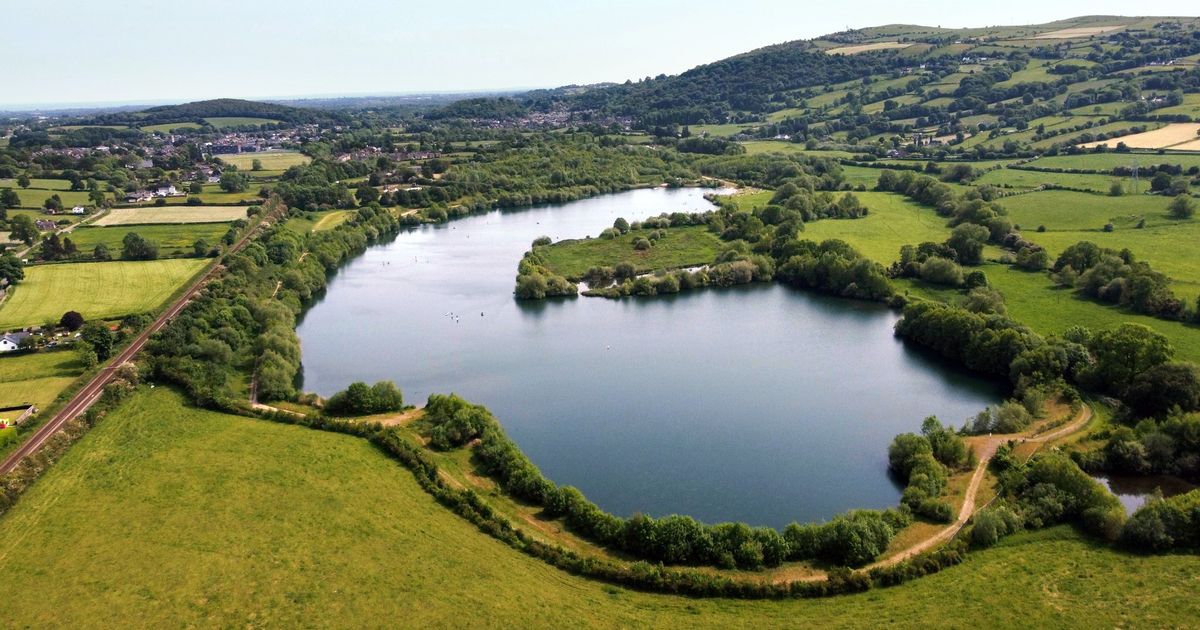It’s hoped the mystery pair will spark a surge in eco tourism
18:00, 22 Oct 2025Updated 19:41, 22 Oct 2025
A mystery beaver living next to a North Wales lake has astonished its custodians by somehow acquiring a potential mate. No one knows how either of them got to the 35-acre lake, part of a rewilding project to recreate a prehistoric landscape in the heart of Flintshire.
Since February 2021, a lone brown-coated beaver has been living at Park In The Past (PITP), an attraction featuring a reconstructed Roman fort. To avoid disturbance, its presence was kept under wraps until earlier this year.
So when a second “beige” beaver was spotted on a wildlife camera, PITP volunteers could scarcely believe their eyes. Already there are signs the pair have coupled up: they were filmed having a domestic squabble over a gnawed stick.
Now there are tentative hopes the patter of baby beavers – known as kits – may be heard next summer. The animals typically breed between December and April, with litters of up to four kits born between May and July.
“We’d noticed a sudden increase in tree chewing and felling,” said PITP publicity officer Phil Hirst. “Now we know there are two of them, it’s as if they are preparing for winter and building up their reserves for the breeding season.”
Having been hunted to extinction some 400 years ago, the Wildlife Trusts in Wales have been working for two decades to restore them to the Welsh landscape. Although one family is thought to have been established in the Dyfi estuary for several years, official beaver introductions in Wales have lagged behind those in England and Scotland.
PITP regards its beavers as a happy accident. It’s still a mystery how they got to be there: one theory is that they arrived via the River Alyn, a tributary of the River Dee – in which case, they could have originated much further afield. Join the North Wales Live Whatsapp community now
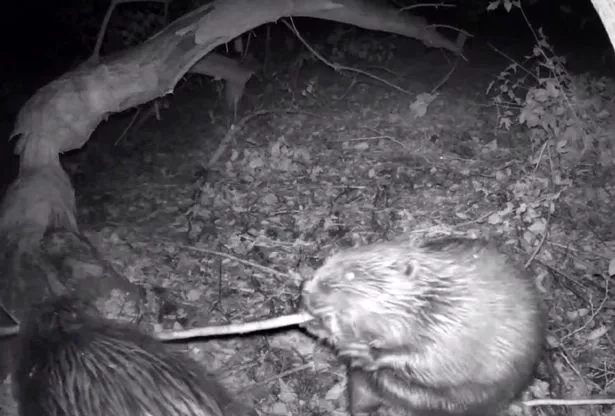 The light-coloured female defends her stick in a furious tug-of-war(Image: Park In The Past)
The light-coloured female defends her stick in a furious tug-of-war(Image: Park In The Past)
Having been reported to North Wales Wildlife Trust, which is keeping a watching brief, PITP has been given leave to keep their beavers as they are not causing any problems.
The presence of a second beaver at the 120-acre site was confirmed by lake warden Andy Scud. He had been placing wildlife cameras near newly chewed trees after noticing gnawing activity had doubled. Hoping to film the site’s camera-shy “elusive furry monster” – the original male beaver – he last week got a major surprise.
“When I checked my camera I had two beavers on film,” he said. “I sat back and words escaped me!
“The big furry beaver is our original one from 2021. The lighter coloured one is our newcomer and they clearly are a couple as they are fighting over food.”
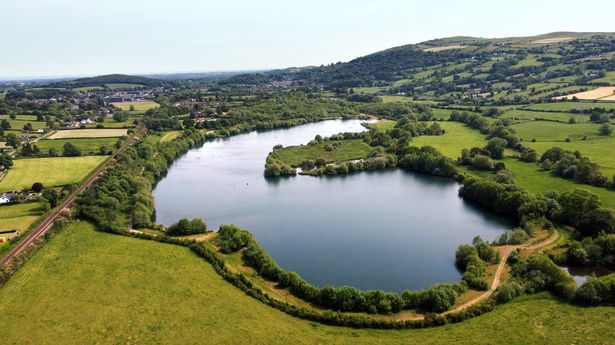 Beavers have set up home at the Park in the Past’s lake(Image: Park in the Past)
Beavers have set up home at the Park in the Past’s lake(Image: Park in the Past)
Already there are hopes the park’s unlikely residents will become star attractions. Besides its heritage offering, the site is popular with walkers, paddlers and wild swimmers.
It’s also a major events venue: an annual Wicker Man burning on November 1 – part of a Roman Army Weekend – is sold out and a fire show will accompany PITP’s Saturnalia Roman Festival on December 13.
But rewilding has long been a key aspiration, given that PITP was established in 2016 at a former sand and gravel quarry in Hope which had closed 12 years earlier. Its aim since day one was to transform the industrial site into a “vibrant historical and ecological park”.
“We have trout and carp in the lake and last year we had a visit from an osprey,” said Phil. “We’ve seen kites here and a peregrine falcon once knocked out our drone.
“We still have a long way to go before we fully recreate a first century landscape. But to have two beavers here, a keystone species, using a lake that’s among Britain’s cleanest, shows we are making real progress.”
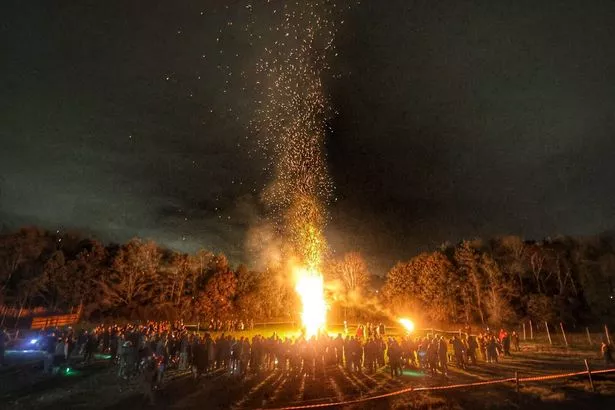 PITP’s Wicker Man burning event returns on November 1(Image: Karl Eastwood)
PITP’s Wicker Man burning event returns on November 1(Image: Karl Eastwood)
Discussions are underway to introduce primitive sheep to the site: Roman-era goat breeds are in situ already. But it’s the beavers that are generating the most excitement, with plans to promote eco-tourism through beaver visits and activities.
By necessity, these will be discreet. As the beavers are tucked away in a quiet corner of the park, the park’s custodians are aware of the potential for human disturbance. Besides, they are rarely seen, being mostly nocturnal. Gnawing activity, however, is more easily spotted.
“Given that they can swim the length of the lake underwater, they can stay out of sight easily,” said Andy .”Perhaps they might be out a bit more during daylight if they have babies.”
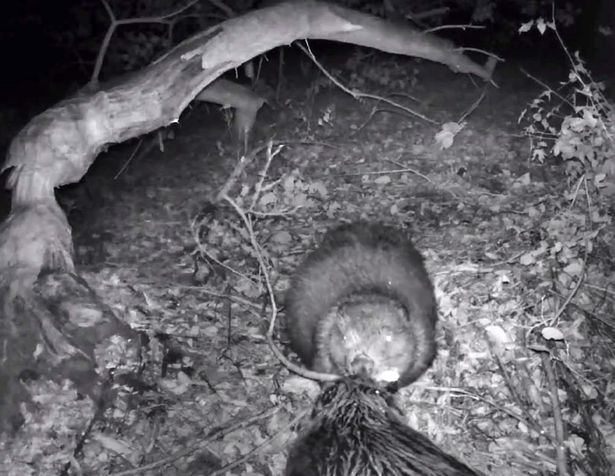 The furry couple appear to smooch up to each other – but the male just wants the female’s stick(Image: Park In The Past)
The furry couple appear to smooch up to each other – but the male just wants the female’s stick(Image: Park In The Past)
In February, a pair of beavers were introduced to an enclosure at a nature reserve near Shrewsbury. But neither have escaped, nor are there any other known populations in the wider area.
Four individuals or pairs are thought to have been released by rewilding enthusiasts in parts of Britain. In Wales, it is an offence to release beavers into rivers without a licence.
On October 2, the Welsh Government announced it will extend European Protected Species status to beavers, making it illegal to deliberately harm them or damage their habitats.
The move was a response to the climate and nature emergencies, and paves the way for managed reintroductions. Mary Lewis, of Natural Resources Wales (NRW), said: “Beavers were once an integral part of our native wildlife, playing a crucial role in shaping ecosystems.
“Their activities in rivers and wetlands help create rich, diverse habitats that support a wide range of species. Sign up for the North Wales Live newsletter sent twice daily to your inbox
“They also provide important environmental benefits, such as improving water quality and reducing flood risk by slowing the flow of water through river systems. Reintroducing beavers can make our environment more resilient and healthier.”
More details about Park In The Past, including entry prices, can be found here.
See what’s on in your area

